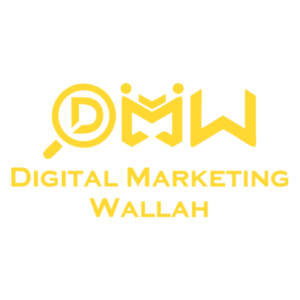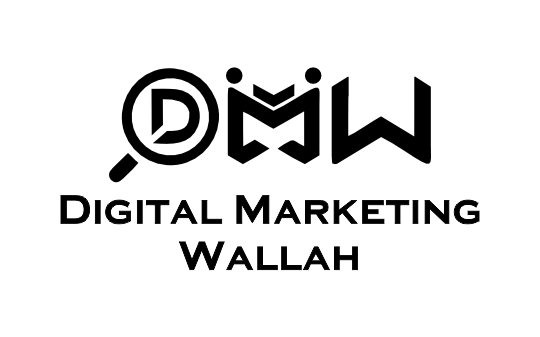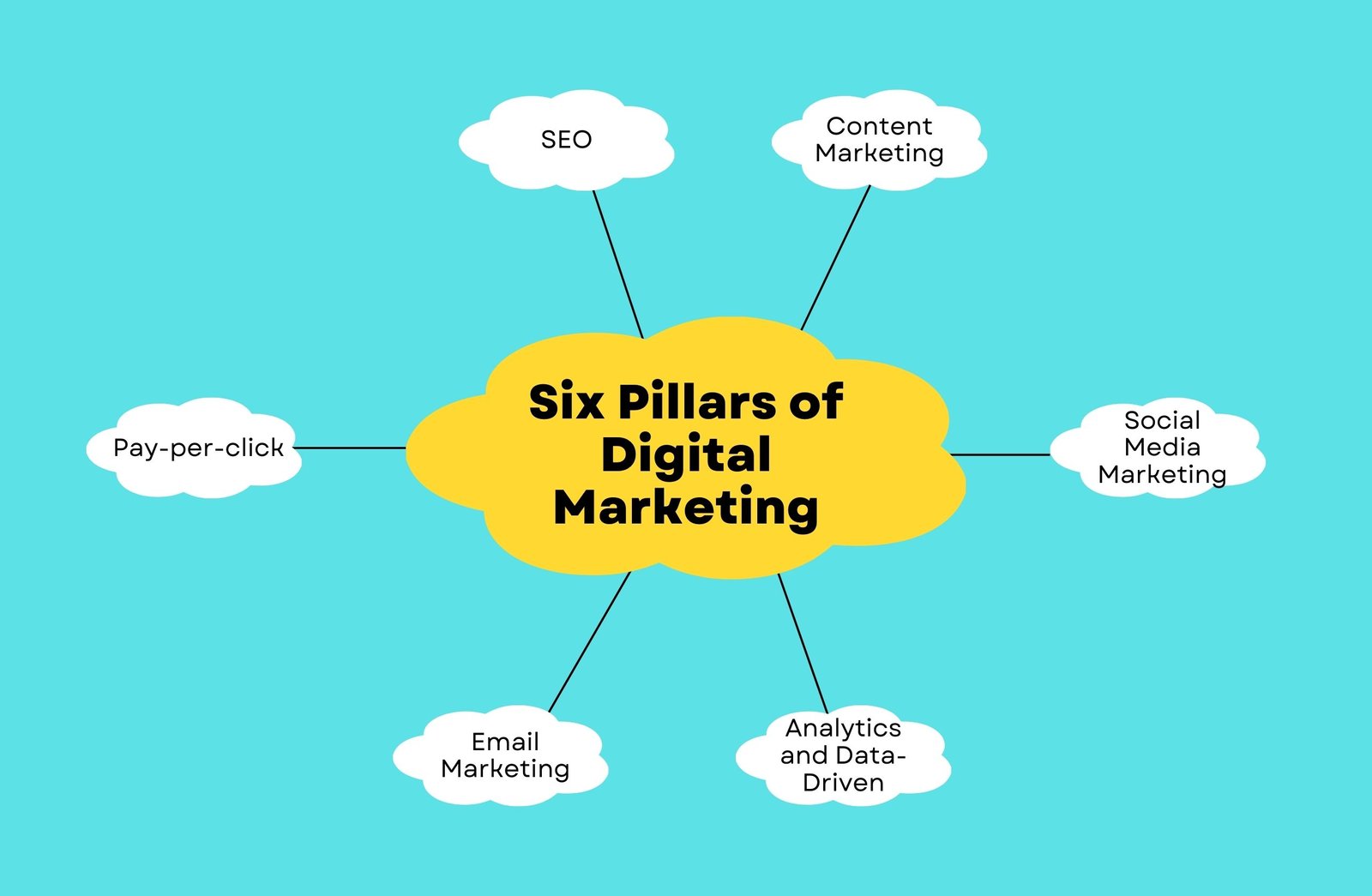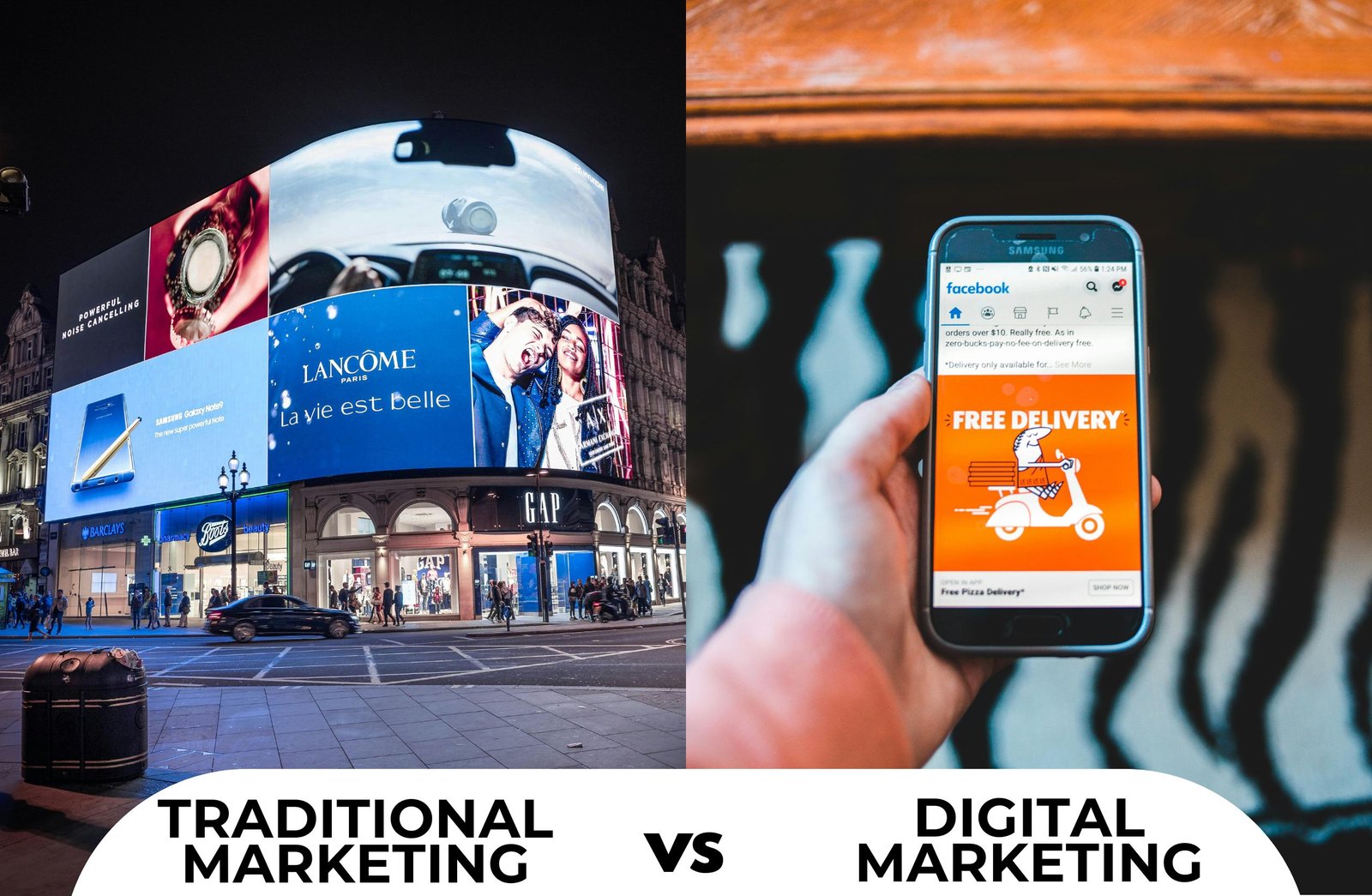Six Pillars of Digital Marketing: A Comprehensive Guide
The Key to a Successful Online Strategy In today’s fast-paced digital world, businesses must have a strong online presence to stay competitive. The six pillars of digital marketing—SEO, content marketing, social media, email marketing, pay-per-click (PPC) advertising, and analytics—are essential components of a successful digital strategy. These elements build brand awareness, drive traffic, engage audiences, and increase conversions. Businesses can create a robust marketing strategy that delivers measurable results and long-term growth by effectively leveraging these six pillars.
1. Search Engine Optimization (SEO)
SEO is the process of optimizing a website to rank higher on search engine results pages (SERPs). It involves keyword research, on-page optimization, technical SEO, and link building. By improving SEO, businesses can increase organic traffic and enhance their visibility online.
Key Elements of SEO:
-
- On-page SEO: Optimizing content, meta tags, headings, and URLs.
-
- Off-page SEO: Building high-quality backlinks and domain authority.
-
- Technical SEO: Improving site speed, mobile-friendliness, and crawlability.
-
- Local SEO: Targeting location-based searches for better reach.
Why SEO Matters?
-
- Enhances website credibility and authority.
-
- Increases organic search rankings and traffic.
-
- Helps attract high-intent users actively searching for relevant products or services.
-
- Provides long-term results compared to paid advertising.
-
- Drives sustainable growth without ongoing ad spend.
2. Content Marketing
Content marketing focuses on creating valuable, relevant, and engaging content to attract and retain an audience. It includes blog posts, infographics, videos, eBooks, podcasts, and social media content. High-quality content helps build trust and establishes a brand as an authority in its industry.
Best Practices for Content Marketing:
-
- Understand your target audience and their pain points.
-
- Create content that educates, informs, or entertains.
-
- Optimize content for SEO by incorporating relevant keywords.
-
- Use visuals like images and videos to improve engagement.
-
- Promote content across multiple channels for maximum reach.
-
- Maintain a consistent publishing schedule for audience retention.
Benefits of Content Marketing:
-
- Drives organic traffic and improves SEO rankings.
-
- It helps businesses establish thought leadership.
-
- Supports other digital marketing strategies, including social media and email marketing.
-
- Increases customer retention through valuable content.
-
- Encourages audience engagement and brand loyalty.
3. Social Media Marketing (SMM)
Social media marketing involves promoting products or services on platforms like Facebook, Instagram, Twitter, LinkedIn, and TikTok. It helps brands connect with their audience, increase brand awareness, and drive website traffic.
Effective Social Media Strategies:
-
- Post consistently and engage with your audience.
-
- Use various content types (images, videos, polls, live sessions).
-
- Leverage influencer collaborations for broader reach.
-
- Track metrics to measure performance and optimize strategy.
-
- Utilize paid social ads for targeted marketing.
-
- Create interactive content such as quizzes and surveys.
Why is Social Media Marketing Crucial?
-
- Increases brand visibility and engagement.
-
- Allows for direct communication with customers.
-
- Enhances customer loyalty through personalized interactions.
-
- It drives traffic to your website and boosts conversions.
-
- Expands customer reach with viral content potential.
4. Pay-Per-Click Advertising (PPC)
PPC advertising is a paid strategy that allows businesses to bid on keywords and display ads on search engines and social media platforms. It provides immediate traffic and is highly measurable.
Components of a Successful PPC Campaign:
-
- Conduct keyword research to target the right audience.
-
- Optimize ad copy and landing pages for better conversions.
-
- Set a proper budget and bid strategy to maximize ROI.
-
- Monitor and adjust campaigns based on performance data.
-
- Utilize remarketing techniques to re-engage potential customers.
-
- Perform A/B testing to improve ad performance.
Advantages of PPC Advertising:
-
- Generates instant traffic and leads.
-
- Offers precise targeting options (demographics, interests, behaviors).
-
- Provides precise analytics and performance insights.
-
- Complements SEO efforts by capturing high-intent users.
-
- Ensures scalability and flexibility in the advertising budget.
5. Email Marketing
Email marketing remains one of the most effective ways to nurture leads and retain customers. Sending personalized and targeted emails helps businesses build relationships and increase sales.
Key Email Marketing Strategies:
-
- Build and segment your email list for better targeting.
-
- Craft compelling subject lines and engaging content.
-
- Automate email sequences for lead nurturing.
-
- Analyze open rates, CTRs, and conversions to refine strategy.
-
- Use A/B testing to optimize email performance.
-
- Personalize emails with dynamic content and recommendations.
Why Email Marketing Works?
-
- Delivers high ROI compared to other digital marketing strategies.
-
- Allows personalized messaging for customer engagement.
-
- Builds customer trust and brand loyalty.
-
- Supports other digital marketing channels like content marketing and PPC.
-
- Enables businesses to run promotional and seasonal campaigns.
6. Analytics and Data-Driven Marketing
Tracking and analyzing marketing efforts is crucial for success. Data-driven marketing involves using analytics tools like Google Analytics, SEMrush, and HubSpot to measure campaign performance and make informed decisions.
Importance of Analytics in Digital Marketing:
-
- Identifies user behavior and preferences.
-
- Helps optimize campaigns for better results.
-
- Provides insights into customer journeys and conversion paths.
-
- Enables A/B testing for marketing improvements.
-
- Enhances decision-making through real-time data insights.
-
- Facilitates better allocation of marketing budget based on performance.
How to Use Data-Driven Marketing Effectively?
-
- Set clear marketing goals and KPIs.
-
- Utilize advanced analytics tools to track performance.
-
- Personalize marketing campaigns using customer insights.
-
- Continuously optimize strategies based on data findings.
-
- Adapt to trends by analyzing audience engagement metrics.
Conclusion
The six pillars of digital marketing work together to create a powerful online strategy. Whether you’re focusing on SEO, content marketing, social media, PPC, email marketing, or analytics, each pillar plays a crucial role in digital success. By leveraging these strategies effectively, businesses can achieve sustainable growth and long-term success in the digital landscape.
Investing in digital marketing is a secure step towards ensuring that businesses stay competitive, reach their target audience, and drive consistent revenue growth. Implementing a well-rounded marketing strategy that integrates all six pillars will maximize results and boost overall brand performance.







